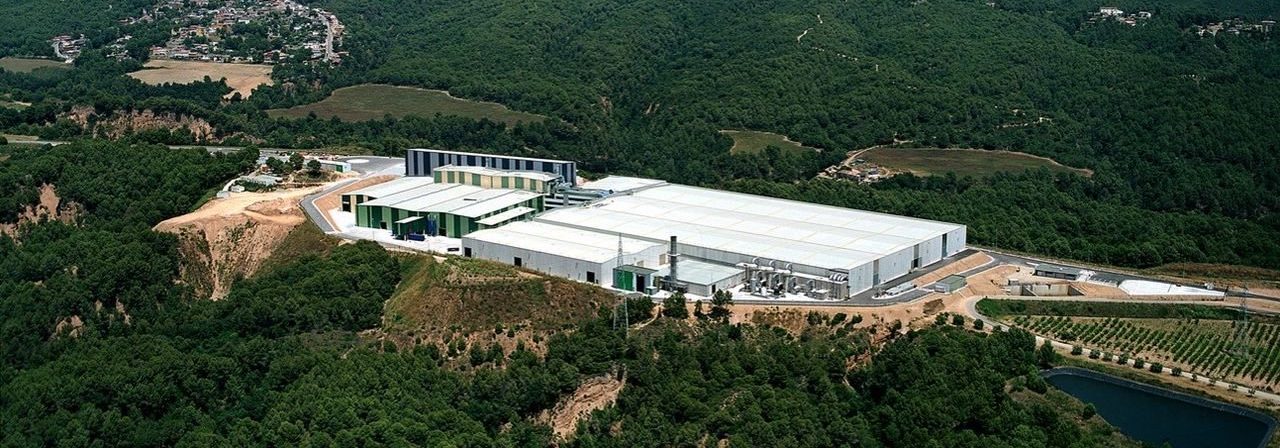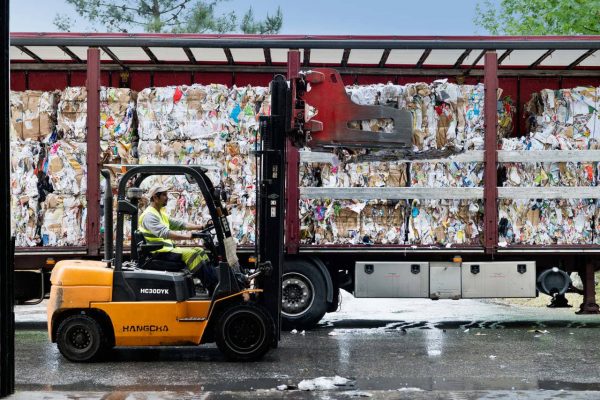
Interview with Fidel López Soria about the Circular Economy on the World Environment Day: “waste is a valuable resource”
05 of June of 2020
Natural resources are limited, much like the linear economy, which is meant to evolve towards a more sustainable model in the economic and social fields. By 2020, the percentage of recycling and recovery of waste in Europe should have reached 50%, but we are still very far from that goal. On World Environment Day, we interviewed Fidel López, CEO of Ferrovial Services, to know about his opinion of the current situation and his vision for the future.
What challenges does the pandemic pose for waste treatment?
The pandemic has shown once again that waste treatment is a vital, essential service in any situation. Our Treatment and Environmental Services team has responded admirably to complex situations, such as the exponential growth in the volume of healthcare waste in just a few weeks. I would like to acknowledge their superb performance.
How does Ferrovial Services see the Circular Economy?
The Circular Economy is a core component of our business model, both now and, particularly, in the future. Society is evolving irreversibly from a Produce, Use and Dispose model towards a Reduce, Reuse and Recycle approach —the 3 R’s— like nature itself, in which there are no such things as waste or landfills. Everything is reused, a dynamic that is taking over from the traditional approach of making things from scratch.
What commitments do the European directives require?
We face a major challenge. The percentage of municipal waste that is recycled and recovered must reach 50% this year, 2020, and increase gradually by 5 percentage points every 5 years to reach 65% in 2035. Additionally, in that year no more than 10% of waste can be disposed of in landfills. In 2019, the United Kingdom recycled 45% of its municipal waste and incinerated close to 44%, disposing of just under 11% in landfills. According to the latest report from Spain’s Ministry for the Ecological Transition, the average recycling rate was 36% in 2017. Much remains to be done.
Which of Ferrovial Services’ Circular Economy projects would you underline?
In line with the Polluter Pays principle, it is vital to foster cooperation with producers, who are increasingly better organized through Producer Responsibility Organizations (PRO), not-for-profit entities set up to manage producers’ responsibility to bear the cost of collecting and treating their waste.
A good example is our plant, the only one in Spain, for mechanical processing and reuse of pharmaceutical waste, coupled with energy-from-waste, that enables us to provide an assurance of zero waste to pharmaceutical laboratories and cosmetic manufacturers. There we separate, sort and treat medicines and packaging that citizens dispose of in more than 21,000 SIGRE points located in pharmacies all over Spain.
Another outstanding case is our new PET flake recycling plant in Barcelona, where we have entered an incipient market in which producers are being incentivized to participate. The plant recycles mainly bottles so as to close the plastic cycle and give the packaging a new lease of life.
And a growing number of clients are engaging us to help them achieve Zero Waste to Landfill certification through recycling and reuse of materials and the production of clean fuels. I am referring to examples such as the Ford factory in Valencia or the Bank of Santander Corporate City.

Is waste a source of energy?
Without a doubt, waste is a source of clean energy. For example, we are making a major leap in the use of biogas from waste, as we operate Spain’s only industrial plant for upgrading biogas, produced at the Valdemingómez (Madrid) biomethanization plant, to make renewable natural gas (biomethane) that can be fed into the gas grid as clean energy: it produces about 100,000 MWh per year, enough to power 20,000 homes, or 500 buses in Madrid’s mass transit system.
In the UK, we built and are operating a large-scale energy-from-waste project in North Yorkshire, which can treat 320,000 tons of waste and produce 200,000 MWh of electricity per year, enough to meet the needs of about 40,000 households.
Is innovation the main variable in this process?
It is evidently a core component, but it is not the only one, since many of the technologies are already available. Waste management is going to evolve to become an industrial process, in line with Industry 4.0. Using big data and artificial intelligence, treatment plants will be operated as smart factories for the production of raw materials.
We have some very advanced pilot projects that combine artificial intelligence with advanced robotics at Ecoparque 4 and a number of plants in Spain and Portugal. In all cases we are achieving sizeable improvements in both recovery rates and the quality of the recovered materials. In parallel, we have projects using sensorization and big data to digitalize plants and produce real-time scorecards that enable us to operate and maintain the facilities much more efficiently and safely.
We are also using virtual and augmented reality for training staff, emulating other industries that use simulators for this purpose. These tools will significantly improve workers’ hazard awareness and enhance safety in our installations, which is a top priority for us.
So, what’s the paradigm shift?
In a Linear Economy, garbage is waste that is viewed as worthless and most of it is disposed of in a landfill. But, like natural resources, the current approach is finite; therefore, it is destined to disappear. Conversely, in the Circular Economy, waste is a source of energy or a raw material —a resource to which we must give a new lease of life.
The challenge is enormous, but it also offers great opportunities, which we must approach through public-private partnerships, sharing the effort. Public administrations must invest in order to improve recovery rates. Waste management companies and recyclers must contribute our know-how and management capabilities. Producers must switch to using recovered materials in their products and, as citizens, we must separate at source, which is vital, and also demand greener products and services. We must break out of the current vicious circle, which is environmentally harmful, into a new virtuous circle.





There are no comments yet